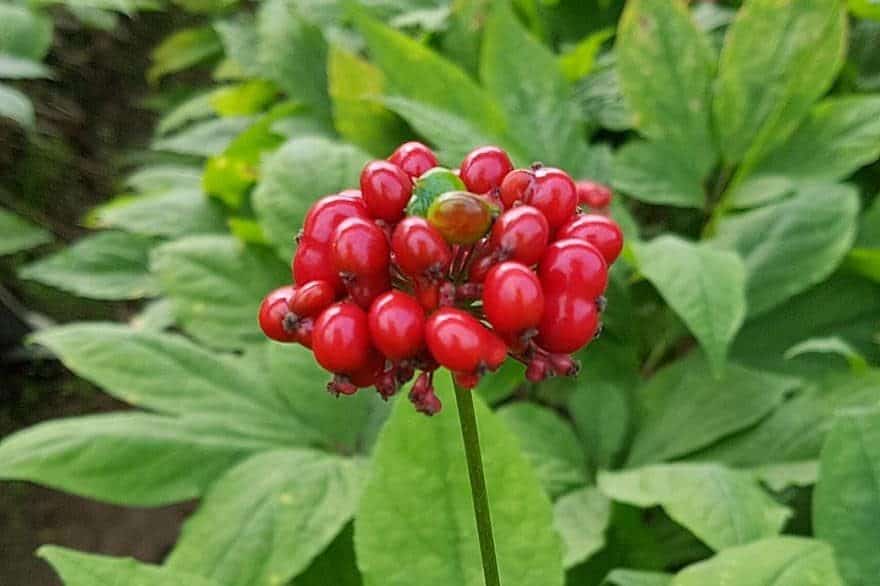If you’re interested in how to grow ginseng hydroponically, you can simplify it into the preparation of growing foundation, planting, and maintenance. Ginseng is one of the healthiest crops to grow yourself, and it’s even easy to do so in a greenhouse. Therefore, it’s no surprise that many gardeners are looking into hydroponic systems to make its cultivation more environmentally conscious.
Using the greenhouse in combination with hydroponics is not only helpful to the environment because it is water-efficient and requires fewer insecticides and herbicides. For growing a highly marketable crop like ginseng, this approach provides a higher growth rate, giving you a high return rate. Growing ginseng hydroponically in a greenhouse even saves you effort compared to traditional soil cultivation.

Know-How To Grow Ginseng Hydroponically In 3 Steps
Preparation of growing foundation
Hydroponics systems require an excellent growing foundation, and with ginseng, choose something close to the natural environment as much as possible. One of the best growing foundations for this crop is peat moss because it’s similar to ginseng’s natural environment, forest floors. You can use pots filled with peat moss for your hydroponic system.
Another growing media that you can use for ginseng is a mixture of peat moss, perlite, and forestry sand. It is also worth noting that there are various methods for ginseng’s hydroponic system, so it’s possible to find something that you think will work best for you. For example, some growers start by freezing bags with sand and ginseng seeds for four months to mimic their conditions of being buried in fall and winter.
Planting
You can plant ginseng roots or seedlings two inches deep in the peat moss, making sure that the sprouting part is upward. Gardeners might also recommend ginseng grown in the wild for hydroponics. Otherwise, you can use roots or seedlings, but make sure they are from a reputable source.
Another good ratio you can do is having four ginseng seeds for one root trainer in a growing media. When it comes to the area for your hydroponic system, ginseng will thrive well if it receives sunlight similarly in the forest. This means you should filter the sunlight to mimic this setting, and using a greenhouse will copy the crop’s native environment.
Remember that ginseng thrives well in shady, hardwood forests of the eastern US. In the greenhouse, use a low wattage light while keeping the temperatures between 68 to 72°F. Nonetheless, it would help if you learned as you go with growing hydroponically and make it a habit always to monitor your plants.
Maintenance
Use a ginseng-specific nutrient solution to ensure that the system will sufficiently nourish your plants. Follow the directions for mixing the solution and add it to your water trays to circulate it onto the ginseng roots. The use of water trays like this in a hydroponic system allows you to water and nourish your plants at a set rate effortlessly.
You can also irrigate with water containing a nutrient solution weekly and irrigate with only water every fourth week. After 20 weeks, store the seedlings in cold storage for 14 weeks to speed the maturation. In general, it takes two years before you can harvest ginseng grown hydroponically.
An excellent method to know if the ginseng roots are suitable for harvest is if their fresh weight reaches at least an ounce. Patience is necessary when waiting for harvest, but the return you’ll get from quality yield is definitely worth the wait.
Why Is Ginseng Suitable For Hydroponics?
As time goes on, more and more gardeners are looking into using hydroponics to produce ginseng. One of the reasons that make ginseng very suitable for hydroponic production is that it will thrive well indoors. Remember that ginseng is best grown in a cool environment with low light, which is also why it’s a greenhouse favorite.
But what makes hydroponic production a worthy endeavor for growing ginseng? For starters, ginseng grows slowly, and its yield is relatively low to support the demand. The cost producers have to pay for ginseng cultivation in the wild is significantly higher than growing it using hydroponics.
In addition to increasing yields, growing ginseng hydroponically will also ensure that your harvest quality will be consistently good. You can also get good profit by growing ginseng until your crops are two-year-old roots. After all, these seedlings are incredibly suitable for hydroponics, and you can grow them at a high density.
Growing ginseng seedlings and selling them allows other gardeners to have quality planting stock. Since you’ve grown them hydroponically, they will surely be vigorous enough for soil-less production later on. With proper patience and techniques, ginseng grown hydroponically can be more profitable than ginseng grown in soil.
Conclusion
The cool temperature and low light requirement of ginseng make it an easy crop for greenhouse production. But if you’re interested in cultivating this crop for profit, save yourself the hassle and learn how to grow ginseng hydroponically. Soil-less production of ginseng is achievable and profitable using a hydroponic system.
This approach will take you three steps. They are preparation of growing foundation, planting, and maintenance. Growing ginseng hydroponically is relatively straightforward, and the main takeaway is ensuring that you’re mimicking its natural environment, and using a greenhouse can help with this.
Additionally, using a ginseng-specific nutrient solution should help your crops thrive.

Thank you for the useful info.
Where can you buy a ginseng-specific nutrient solution or do you have examples?
Thank you